| 1960, The Silver Beetles (John Lennon, Paul McCartney, George Harrison, Stuart Sutcliffe, and Tommy Moore) auditioned for promoter Larry Parnes and singer Billy Fury for a job as Fury's backing group. Parnes was also looking for backing groups for his lesser-known acts, and The Silver Beetles were selected as backing group for singer Johnny Gentle's upcoming tour of Scotland. The group had changed its name from 'The Beatals' to 'The Silver Beetles' after Brian Casser (of Cass and the Cassanovas) remarked that the name 'Beatals' was "ridiculous". He suggested they use the name 'Long John and the Silver Beetles', but John Lennon refused to be referred to as 'Long John'. |
![]() |
1963, The Rolling Stones recorded the Chuck Berry song 'Come On', at Olympic Studios, London. This the bands first release was issued on the 7th June 1963 by Decca Records.
![more]() |
![]() |
1964, Bob Dylan arrived in Britain for his first major UK tour including a show at London's Royal Festival Hall on the 17th of this month.
![more]() |
![]() |
| 1965, The Rolling Stones recorded a version of '(I Can't Get No) Satisfaction' at Chess Studios in Chicago, with Brian Jones on harmonica. The group re-recorded it two days later at RCA Studios in Hollywood, with a different beat and the Gibson Maestro fuzzbox that Keith Richards had recently aquired, adding sustain to the sound of the guitar riff. Read the full story |
![]() |
| 1967, Mick Jagger and Keith Richards appeared at Chichester Crown Court, Sussex, charged with being in possession of drugs, they elect to go to trial pleading not guilty and were both granted £100 bail. |
![]() |
| 1967, This week's UK Top 5 singles: No.5, Lulu, 'The Boat That I Row', No.4, The Tremeloes, 'Silence Is Golden', No.3, Frank and Nancy Sinatra, 'Somethin' Stupid', No.2, Mamas and the Papas, 'Dedicated To The One I Love', and No.1, Sandie Shaw, 'Puppet On A Sting.' |
![]() |
1969, Fleetwood Mac, Pink Floyd, The Move, Status Quo, Tremeloes, Marmalade, Love Sculpture, Van Der Graaf Generator all appeared at Nottingham County Football Ground, Nottingham, England. Presented by John Peel, tickets 22/6 on the gate.
![more]() |
![]() |
| 1969, Frank Sinatra's version of 'My Way' made the British Top ten for the first time. Over the next three years it re-entered the Top 50 singles chart on eight different occasions. Paul Anka re-wrote the original French song for Sinatra, after he told Anka he was quitting the music business. Anka changed the melodic structure and lyrics to the song with Sinatra in mind. |
![]() |
| 1969, The Moody Blues started a two-week run at No.1 on the UK album chart with 'On The Threshold Of A Dream' (their first No.1 album). |
![]() |
| 1969, The Turtles gave a special performance at the White House as guests of Tricia Nixon. Stories circulate concerning members of the group allegedly snorted cocaine on Abraham Lincoln's desk. |
![]() |
1969, Led Zeppelin made their first appearance on the UK album chart when the band's debut album charted at No. 6, going on to spend 71 weeks on the UK chart. It entered the US chart the following week at No. 10. Recorded in around 36 hours, the album is now considered one of the most important debuts in rock, creating an entirely new interpretation of the Rock And Roll genre, with groundbreaking musical styles and recording techniques.
![more]() |
![]() |
1970, David Bowie was awarded an Ivor Novello Award for Best Original Song 'Space Oddity', which he performed that night accompanied by the Les Reed Orchestra. The event was transmitted live via satellite to venues in America, France, Spain, Australia, Holland and Venezuela. Bowie would later revisit his Major Tom character in the songs 'Ashes to Ashes' and 'Hallo Spaceboy'.
![more]() |
![]() |
| 1970, |
![]() |
1985, All girl group The Go-Go's announced they were breaking up. The members went on to enjoy solo success, (Belinda Carlisle and Jane Wiedlin) and the group reformed in the late 90's.
![more]() |
![]() |
| 1986, Motley Crue drummer Tommy Lee married TV star Heather Locklear in a courtyard in Santa Barbara California with five hundred guests. Tommy wore a white leather tuxedo. |
![]() |
| 1986, Falco was at No.1 on the UK singles chart with 'Rock Me Amadeus.' Falco became the first-ever Austrian act to score a UK and US No.1 hit single and the first German speaking artist to achieve a No.1 on the US charts. Falco died of severe injuries received on 6 February 1998, when his Mitsubishi Pajero collided with a bus in the Dominican Republic. It was later determined that the bus driver was speeding, for which the driver served three years in prison. His estate claims he has sold 20 million albums and 15 million singles, which makes him the best selling Austrian singer of all time. |
![]() |
| 1986, The Pet Shop Boys went to No.1 on the US singles chart with 'West End Girls', the duo's first US No.1, also a No.1 in the UK. |
![]() |
1991, Madonna's 'warts and all' documentary film 'Truth Or Dare in bed with Madonna', premiered in Los Angeles.
![more]() |
![]() |
| 1994, Rapper Tupac Shakur began serving a 15-day county jail term for attacking director Allen Hughes on a video set. |
![]() |
1997, Gary Barlow scored his second UK No.1 single with a song written by Madonna 'Love Won't Wait', the former Take That singer's second and last solo hit.
![more]() |
![]() |
1997, The Hillsborough Benefit gig took place at Liverpool's Anfield Stadium with The Beautiful South, Manic Street Preachers, Dodgy, Space, Stereophonics and The Lightning Seeds.
![more]() |
![]() |
| 1999, American singer, songwriter poet, cartoonist, screenwriter, and author of children's books Shel Silverstein died of a heart attack aged 57. Wrote, 'A Boy Named Sue' for Johnny Cash (which Silverstein won a Grammy for in 1970) and many songs for Dr Hook including 'Sylvia's Mother' and 'The Cover of the Rolling Stone.' |
![]() |
| 2000, Bobby Brown was arrested at Newark airport, New Jersey for breaking his probation order. He had been wanted in Florida since 1999 when his probation officer reported that a urine test proved positive for cocaine use. |
![]() |
| 2000, Michael Bolton lost his appeal against a court ruling that he stole part of his 1991 hit 'Love Is a Wonderful Thing' from an Isley Brothers song. Bolton had asked for a retrial following a 1994 jury verdict that he had plagiarised parts of The Isley Brothers song of the same name, but, an appeals court panel upheld the ruling which awarded the group $5.4m (£3.37m) from the profits of Bolton's single - one of his biggest hits. |
![]() |
| 2005, Seal married German supermodel Heidi Klum in a low-key ceremony on a beach in Mexico near the singer's home on the luxurious Costa Careyes. |
![]() |
2007, US hip-hop artist Akon apologised after footage of him dancing provocatively on stage with a teenage girl was posted on the internet. It led to telecommunications company Verizon pulling out as a sponsor of his US tour with Gwen Stefani. The incident took place on 12 April in Trinidad, where Akon was performing at a nightclub. It was later reported that the girl was just 14. In a statement Akon said he didn't know the girl was underage. He said: "I want to sincerely apologise for the embarrassment and any pain I've caused to the young woman who joined me on stage, her family and the Trinidad community for the events at my concert."
![more]() |
![]() |
| 2010, New York City's Apollo Theatre began installing bronze plaques on the sidewalk outside the building of legends who had close ties to the theater. Among the first to be honored were James Brown, Michael Jackson, Smokey Robinson and Ella Fitzgerald. |
![]() |
2011, The ornate iron gates of a children's home which inspired John Lennon's psychedelic Beatles anthem Strawberry Fields Forever were removed after The Salvation Army, which owned the former home, decided to put the red Victorian gates into storage. Beatles fans who passed the Liverpool site on tours would now be met with 10ft (3m) high replicas. The original gates were being taken to a secret location for storage, and would eventually be auctioned off.
![more]() |
![]() |
| 2013, A two-year degree in heavy metal music was branded an "easy option" by education campaigners. The foundation degree was being offered by New College Nottingham in the UK. The course, which was due to start later this year would include modules on the music business, the history of heavy metal and its role in films and video games and would show students how to compose and perform heavy metal songs. |
![]() |
2013, Two men were arrested in Dublin after the city centre statue of Phil Lynott was pushed over and seriously damaged. The memorial to the Thin Lizzy icon has been removed from its Harry Street location for repairs, and the men were later released without charge. The life-size bronze sculpture was unveiled in 2005 and had become a tourist destination and landmark since then.
![more]() |
![]() |
![]() |
| May 10th: Born on this day |
![]() |
1920, Born on this day, Bert Weedon, (1959 UK No.10 single 'Guitar Boogie Shuffle'. Published the 'Play In A Day' guitar tutor. Worked with Tommy Steele, Cliff Richard, Frank Sinatra and Tony Bennett. Weedon died on 20th April 2012 aged 91.
![more]() |
![]() |
| 1935, Born on this day, Larry Williams, US singer, The Beatles and The Jam covered his songs. (1957 US No.5 & UK No. 21 single 'Short Fat Fannie'). Williams died from gunshot wounds on 2nd January 1980 aged 45. |
![]() |
| 1938, Born on this day, Henry Fambrough, vocals, Detroit Spinners, (1980 UK No.1 & US No.2 single 'Working My Way Back To You'). |
![]() |
| 1944, Born on this day, Jackie Lomax, UK singer, who was the first act to be signed to The Beatles Apple Records. George Harrison wrote his single 'Sour Milk Sea'. Lomax died on 16th Sept 2013 aged 69. |
![]() |
| 1946, Born on this day, Donovan, UK singer, songwriter, (1966 US No.1 & 1967 UK No.2 single 'Sunshine Superman'). |
![]() |
1946, Born on this day, Graham Gouldman, UK singer, songwriter, guitarist, High Spots, The Crevattes, 10cc, (1975 UK No.1 & US No.2 single 'I'm Not In Love', plus 10 other UK Top 30 hits including 2 No.1's), Wax, (1987 UK No.12 single 'Bridge To Your Heart'). Wrote hits for Herman's Hermits, The Hollies & The Yardbirds.
![more]() |
![]() |
| 1947, Born on this day, Dave Mason, guitar, Traffic, (1967 UK No.2 single 'Hole In My Shoe'), Solo, (1977 US No.12 single 'We Just Disagree'). Worked with Eric Clapton, Delaney and Bonnie, George Harrison. |
![]() |
| 1947, Born on this day, Jay Ferguson, Spirit, 1969 US No.25 single 'I Got A Line On You'), Jo Jo Gunne, (1972 UK No.6 & US No. 27 single 'Run Run Run'). |
![]() |
| 1952, Born on this day, Lee Brilleaux, Dr Feelgood, vocals, harmonica, (1979 UK No.9 single 'Milk And Alcohol'). He died of cancer on 7th April 1994. |
![]() |
| 1952, Born on this day, Sly Dunbar, session drummer, as Sly and Robbie worked with Peter Tosh, Robert Palmer, Jimmy Cliff, Grace Jones, Joe Cocker, (1987 UK No.12 single 'Boops Here To Go'). |
![]() |
1957, Born on this day, John Ritchie (Sid Vicious), bass, vocals, Sex Pistols, 1977 UK No.2 single 'God Save The Queen', and 1977 UK No.1 album 'Never Mind The Bollocks, Here's The Sex Pistols'). Vicious died of a heroin overdose on 2nd February 1979.
![more]() |
![]() |
| 1957, Born on this day, Karl Hyde, vocals, guitar, Underworld, (1996 UK No.2 single 'Born Slippy'). |
![]() |
1960, Born on this day, Paul Hewson, (Bono), vocals, guitar, U2, (1984 UK No.3 single 'Pride, In The Name Of Love' plus over 25 other UK Top singles, 1987 UK and worldwide No.1 album 'The Joshua Tree' spent 156 weeks on the UK chart. Scored five consecutive US No.1 albums from 1987.)
![more]() |
![]() |
| 1967, Born on this day, Young MC, (Marvin Young), 1989 US No.7 single 'Bust A Move'. |
![]() |
| 1968, Born on this day, Richard Patrick, guitarist, Filter, Army of Anyone, also worked with Nine Inch Nails. |
![]() |
| 1985, Born on this day, Ashley Poole, Dream, (2001 US No.3 & UK No.17 single, 'He Loves You Not'). |
![]() |
| 1991, Born on this day, American singer and songwriter Ray Dalton who had the 2013 US No.1 hit 'Can't Hold Us' with Macklemore & Ryan Lewis. |
 328: ο Αθανάσιος εκλέγεται επίσκοπος Αλεξανδρείας.
328: ο Αθανάσιος εκλέγεται επίσκοπος Αλεξανδρείας.  1502: "ο Χριστόφορος Κολόμβος αφήνει την Ισπανία για το τέταρτο και τελευταίο ταξίδι στο ""Νέο Κόσμο""."
1502: "ο Χριστόφορος Κολόμβος αφήνει την Ισπανία για το τέταρτο και τελευταίο ταξίδι στο ""Νέο Κόσμο""."  1726: πέντε άνδρες συλλαμβάνονται σε μία επιδρομή στον οίκο ανοχής για ομοφυλόφιλους άνδρες, στο Λονδίνο και εκτελούνται στο Τάιμπερν.
1726: πέντε άνδρες συλλαμβάνονται σε μία επιδρομή στον οίκο ανοχής για ομοφυλόφιλους άνδρες, στο Λονδίνο και εκτελούνται στο Τάιμπερν.  1791: πεθαίνει ο Αμερικανός συγγραφέας, ο οποίος συνέγραψε τη Διακήρυξη της Ανεξαρτησίας, Φράνσις Χόπκινσον.
1791: πεθαίνει ο Αμερικανός συγγραφέας, ο οποίος συνέγραψε τη Διακήρυξη της Ανεξαρτησίας, Φράνσις Χόπκινσον.  1805: πεθαίνει ο Γερμανός ποιητής και ιστορικός Φρίντριχ Σίλερ.
1805: πεθαίνει ο Γερμανός ποιητής και ιστορικός Φρίντριχ Σίλερ.  1837: γεννιέται ο Ανταμ Όπελ, ιδρυτής της φερώνυμης αυτοκινητοβιομηχανίας.
1837: γεννιέται ο Ανταμ Όπελ, ιδρυτής της φερώνυμης αυτοκινητοβιομηχανίας.  1860: "γεννιέται στη Σκοτία ο Τζέιμς Μπάρι, ο δημιουργός του ""Πίτερ Παν""."
1860: "γεννιέται στη Σκοτία ο Τζέιμς Μπάρι, ο δημιουργός του ""Πίτερ Παν""."  1873: γεννιέται ο Βρετανός αρχαιολόγος Χάουαρντ Κάρτερ, ο οποίος ανακάλυψε τον τάφο του Τουταγχαμόν.
1873: γεννιέται ο Βρετανός αρχαιολόγος Χάουαρντ Κάρτερ, ο οποίος ανακάλυψε τον τάφο του Τουταγχαμόν.  1882: γεννιέται ο Αμερικανός ζωγράφος Τζορτζ Μπάρκερ.
1882: γεννιέται ο Αμερικανός ζωγράφος Τζορτζ Μπάρκερ.  1883: γεννιέται ο Ισπανός συγγραφέας και φιλόσοφος, Χοσέ Ορτέγκα ι Γκασέτ.
1883: γεννιέται ο Ισπανός συγγραφέας και φιλόσοφος, Χοσέ Ορτέγκα ι Γκασέτ.  1887: "κάνει πρεμιέρα στο Λονδίνο το σόου ""Η άγρια Δύση""του Μπάφαλο Μπιλ."
1887: "κάνει πρεμιέρα στο Λονδίνο το σόου ""Η άγρια Δύση""του Μπάφαλο Μπιλ."  1892: γεννιέται η Ζίτα της Βουρβώνης και της Πάρμας, τελευταία αυτοκράτειρα της Αυστροουγγαρίας.
1892: γεννιέται η Ζίτα της Βουρβώνης και της Πάρμας, τελευταία αυτοκράτειρα της Αυστροουγγαρίας.  1901: αρχίζει τις εργασίες του, στη Μελβούρνη, το πρώτο Κοινοβούλιο της Αυστραλίας.
1901: αρχίζει τις εργασίες του, στη Μελβούρνη, το πρώτο Κοινοβούλιο της Αυστραλίας.  1901: πανικός σημειώνεται στο Χρηματιστήριο της Γουόλ Στριτ από την πτώση των τιμών.
1901: πανικός σημειώνεται στο Χρηματιστήριο της Γουόλ Στριτ από την πτώση των τιμών.  1904: πεθαίνει στο Λονδίνο ο διάσημος εξερευνητής της Αφρικής, φίλος της περιπέτειας και δημοσιογράφος σερ Χένρι Στάνλεϊ, ο οποίος είχε διασώσει το 1871 τον Σκοτσέζο εξερευνητή δρ. Ντέιβιντ Λίβινγκστον.
1904: πεθαίνει στο Λονδίνο ο διάσημος εξερευνητής της Αφρικής, φίλος της περιπέτειας και δημοσιογράφος σερ Χένρι Στάνλεϊ, ο οποίος είχε διασώσει το 1871 τον Σκοτσέζο εξερευνητή δρ. Ντέιβιντ Λίβινγκστον.  1905: η βουλή των Κρητών ψηφίζει και κηρύσσει την ένωση της νήσου με την Ελλάδα.
1905: η βουλή των Κρητών ψηφίζει και κηρύσσει την ένωση της νήσου με την Ελλάδα.  1910: η Εθνική Συνέλευση της Κρήτης αποφασίζει παμψηφεί την ένωση με την Ελλάδα.
1910: η Εθνική Συνέλευση της Κρήτης αποφασίζει παμψηφεί την ένωση με την Ελλάδα.  1913: η Ουάσινγκτον ανακοινώνει ότι, στο διάστημα των τελευταίων εννέα μηνών έχουν φτάσει στις ΗΠΑ 900.000 ξένοι.
1913: η Ουάσινγκτον ανακοινώνει ότι, στο διάστημα των τελευταίων εννέα μηνών έχουν φτάσει στις ΗΠΑ 900.000 ξένοι.  1921: "γεννιέται η Σόφι Σκολ, η οποία με άλλες τέσσερις γυναίκες, φοιτήτριες, ήταν μέλη της ομάδας ""Λευκό τριαντάφυλλο""και μάχονταν εναντίον των Ναζί."
1921: "γεννιέται η Σόφι Σκολ, η οποία με άλλες τέσσερις γυναίκες, φοιτήτριες, ήταν μέλη της ομάδας ""Λευκό τριαντάφυλλο""και μάχονταν εναντίον των Ναζί."  1922: η Βρετανία και οι ΗΠΑ καταλήγουν σε συμφωνία για την υπό κατοχή περιοχή της Παλαιστίνης.
1922: η Βρετανία και οι ΗΠΑ καταλήγουν σε συμφωνία για την υπό κατοχή περιοχή της Παλαιστίνης.  1924: στις ΗΠΑ, η Επισκοπική Εκκλησία των Μεθοδιστών παραχωρεί στις γυναίκες το δικαίωμα της χειροτονίας.
1924: στις ΗΠΑ, η Επισκοπική Εκκλησία των Μεθοδιστών παραχωρεί στις γυναίκες το δικαίωμα της χειροτονίας.  1926: ο ναύαρχος Ρίτσαρντ Ε. Μπερντ και ο Φλόιντ Μπένετ, ισχυρίζονται, ότι πέταξαν πάνω από το Βόρειο Πόλο. Αρκετά χρόνια αργότερα το ημερολόγιο του Μπερντ θα διαψεύσει τους δύο άνδρες.
1926: ο ναύαρχος Ρίτσαρντ Ε. Μπερντ και ο Φλόιντ Μπένετ, ισχυρίζονται, ότι πέταξαν πάνω από το Βόρειο Πόλο. Αρκετά χρόνια αργότερα το ημερολόγιο του Μπερντ θα διαψεύσει τους δύο άνδρες.  1927: η Καμπέρα αντικαθιστά τη Μελβούρνη ως πρωτεύουσα της Αυστραλίας και συνέρχεται για πρώτη φορά στην πόλη η Βουλή.
1927: η Καμπέρα αντικαθιστά τη Μελβούρνη ως πρωτεύουσα της Αυστραλίας και συνέρχεται για πρώτη φορά στην πόλη η Βουλή.  1927: ο Τζοε Ντέιβις κερδίζει τον Τομ Ντένις με 20-11 στο Μπέρμπινγχαμ κατακτώντας το 1ο Παγκόσμιο Πρωτάθλημα Επαγγελματικού Σνούκερ.
1927: ο Τζοε Ντέιβις κερδίζει τον Τομ Ντένις με 20-11 στο Μπέρμπινγχαμ κατακτώντας το 1ο Παγκόσμιο Πρωτάθλημα Επαγγελματικού Σνούκερ.  1928: γεννιέται η Καναδέζα πρωταθλήτρια στο πατινάζ, Μπάρμπαρα Αν Σκοτ.
1928: γεννιέται η Καναδέζα πρωταθλήτρια στο πατινάζ, Μπάρμπαρα Αν Σκοτ.  1928: γεννιέται ο Αμερικανός τενίστας, Πάντσο Γκονζάλες.
1928: γεννιέται ο Αμερικανός τενίστας, Πάντσο Γκονζάλες.  1930: διεξάγεται ο εναρκτήριος αγώνας, που προηγείται του πρώτου Triple Crown.
1930: διεξάγεται ο εναρκτήριος αγώνας, που προηγείται του πρώτου Triple Crown.  1930: η Βρετανία, η Ιταλία, το Βέλγιο και η Γαλλία επικυρώνουν το σχέδιο Γιανγκ, που αφορά τις πολεμικές αποζημιώσεις.
1930: η Βρετανία, η Ιταλία, το Βέλγιο και η Γαλλία επικυρώνουν το σχέδιο Γιανγκ, που αφορά τις πολεμικές αποζημιώσεις.  1931: απόπειρα κινήματος των παγκαλικών εξουδετερώνεται στη γένεσή του.
1931: απόπειρα κινήματος των παγκαλικών εξουδετερώνεται στη γένεσή του.  1933: στο Βερολίνο, οι Ναζί καίνε 25.000 βιβλία.
1933: στο Βερολίνο, οι Ναζί καίνε 25.000 βιβλία.  1936: γεννιέται η Βρετανίδα ηθοποιός και πολιτικός, Γκλέντα Τζάκσον.
1936: γεννιέται η Βρετανίδα ηθοποιός και πολιτικός, Γκλέντα Τζάκσον.  1936: γεννιέται ο Βρετανός ηθοποιός ’Αλμπερτ Φίνεϊ.
1936: γεννιέται ο Βρετανός ηθοποιός ’Αλμπερτ Φίνεϊ.  1936: η Ιταλία προσαρτεί επισήμως την Αιθιοπία, καθώς στις 5 του μήνα είχε καταλάβει την πρωτεύουσα Αντίς Αμπέμπα.
1936: η Ιταλία προσαρτεί επισήμως την Αιθιοπία, καθώς στις 5 του μήνα είχε καταλάβει την πρωτεύουσα Αντίς Αμπέμπα.  1936: ο παίκτης της Corinthians Casuals, ομάδας του αμερικάνικου ποδοσφαίρου, Bernard Joy είναι ο τελευταίος ερασιτέχνης που παίζει με την ομάδα της Αγγλίας στον αγώνα εναντίον του Βελγίου.
1936: ο παίκτης της Corinthians Casuals, ομάδας του αμερικάνικου ποδοσφαίρου, Bernard Joy είναι ο τελευταίος ερασιτέχνης που παίζει με την ομάδα της Αγγλίας στον αγώνα εναντίον του Βελγίου.  1940: "γεννιέται ο Αμερικανός παραγωγός, σεναριογράφος και σκηνοθέτης, Τζέιμς Μπρουκς. Ορισμένες από τις πιο διάσημες παραγωγές του είναι η ""Οικογένεια Σίμσον"", ο ""Τζέρι ΜακΓκουάιρ""και το ""Καλύτερα δε γίνεται""."
1940: "γεννιέται ο Αμερικανός παραγωγός, σεναριογράφος και σκηνοθέτης, Τζέιμς Μπρουκς. Ορισμένες από τις πιο διάσημες παραγωγές του είναι η ""Οικογένεια Σίμσον"", ο ""Τζέρι ΜακΓκουάιρ""και το ""Καλύτερα δε γίνεται""."  1942: οι κινεζικές δυνάμεις νικούν τους Ιάπωνες σε αιφνιδιαστική επίθεση, ανακαταλαμβάνοντας την πόλη Μαϊμίο.
1942: οι κινεζικές δυνάμεις νικούν τους Ιάπωνες σε αιφνιδιαστική επίθεση, ανακαταλαμβάνοντας την πόλη Μαϊμίο.  1944: "γεννιέται ο μουσικός Ρίτσι Φιούρεϊ, ο οποίος ήταν μέλος του γκρουπ ""Buffalo Spriengfield""."
1944: "γεννιέται ο μουσικός Ρίτσι Φιούρεϊ, ο οποίος ήταν μέλος του γκρουπ ""Buffalo Spriengfield""."  1946: γεννιέται η Αμερικανίδα ηθοποιός Κάντις Μπέργκεν.
1946: γεννιέται η Αμερικανίδα ηθοποιός Κάντις Μπέργκεν.  1949: γεννιέται ο Αμερικανός τραγουδιστής Μπίλι Τζόελ.
1949: γεννιέται ο Αμερικανός τραγουδιστής Μπίλι Τζόελ.  1950: ο υπουργός Εξωτερικών της Γαλλίας, Ρομπέρ Σουμάν, παρουσιάζει ένα σχέδιο, στο οποίο προβλέπονται συγκεκριμένα και εύκολα πραγματοποιήσιμα βήματα για την ένωση της Ευρώπης.
1950: ο υπουργός Εξωτερικών της Γαλλίας, Ρομπέρ Σουμάν, παρουσιάζει ένα σχέδιο, στο οποίο προβλέπονται συγκεκριμένα και εύκολα πραγματοποιήσιμα βήματα για την ένωση της Ευρώπης.  1952: στην Κορέα, φυλακισμένοι κομμουνιστές στο νησί Κόγιε αιχμαλωτίζουν τον Αμερικανό επικεφαλής του στρατοπέδου, στρατηγό Ντοντ.
1952: στην Κορέα, φυλακισμένοι κομμουνιστές στο νησί Κόγιε αιχμαλωτίζουν τον Αμερικανό επικεφαλής του στρατοπέδου, στρατηγό Ντοντ.  1955: στον Ψυχρό Πόλεμο, η Δυτική Γερμανία γίνεται μέλος του ΝΑΤΟ.
1955: στον Ψυχρό Πόλεμο, η Δυτική Γερμανία γίνεται μέλος του ΝΑΤΟ.  1956: γίνεται η πρώτη ανάβαση στο Μανάσλου, στα Ιμαλάια, το όγδοο ψηλότερο βουνό στον κόσμο.
1956: γίνεται η πρώτη ανάβαση στο Μανάσλου, στα Ιμαλάια, το όγδοο ψηλότερο βουνό στον κόσμο.  1957: πεθαίνει ο Ιταλός τραγουδιστή όπερας, Ένζιο Πίνζα.
1957: πεθαίνει ο Ιταλός τραγουδιστή όπερας, Ένζιο Πίνζα.  1960: εγκαινιάζεται το Γενικό Κρατικό Νοσοκομείο, δύναμης 450 κλινών.
1960: εγκαινιάζεται το Γενικό Κρατικό Νοσοκομείο, δύναμης 450 κλινών.  1960: οι ΗΠΑ είναι η πρώτη χώρα, που νομιμοποιεί το αντισυλληπτικό χάπι.
1960: οι ΗΠΑ είναι η πρώτη χώρα, που νομιμοποιεί το αντισυλληπτικό χάπι.  1962: οι Μπιτλς υπογράφουν το πρώτο συμβόλαιό τους με τη δισκογραφική εταιρεία ΕΜΙ Parlοphon.
1962: οι Μπιτλς υπογράφουν το πρώτο συμβόλαιό τους με τη δισκογραφική εταιρεία ΕΜΙ Parlοphon.  1965: γεννιέται ο Καναδός αθλητής του χόκεϊ επί πάγου, Στιβ Ίζερμαν.
1965: γεννιέται ο Καναδός αθλητής του χόκεϊ επί πάγου, Στιβ Ίζερμαν.  1965: "εκτοξεύτηκε το μη επανδρωμένο σοβιετικό διαστημόπλοιο ""Lunar 5""που είχε άδοξο τέλος, καθώς συνετρίβη στην επιφάνεια της σελήνης."
1965: "εκτοξεύτηκε το μη επανδρωμένο σοβιετικό διαστημόπλοιο ""Lunar 5""που είχε άδοξο τέλος, καθώς συνετρίβη στην επιφάνεια της σελήνης."  1965: μετά από 1.088 λεπτά τερματίζεται το ρεκόρ του τερματοφύλακα του ΠΑΟ Τάκη Οικονομόπουλου, ο οποίος είχε κατορθώσει να κρατήσει την εστία του ανέπαφη από τις 17/1/1965.
1965: μετά από 1.088 λεπτά τερματίζεται το ρεκόρ του τερματοφύλακα του ΠΑΟ Τάκη Οικονομόπουλου, ο οποίος είχε κατορθώσει να κρατήσει την εστία του ανέπαφη από τις 17/1/1965.  1968: γεννιέται η Γαλλίδα, τρεις φορές ολυμπιονίκης, αθλήτρια στίβου Μαρί-Ζοζέ Περέκ.
1968: γεννιέται η Γαλλίδα, τρεις φορές ολυμπιονίκης, αθλήτρια στίβου Μαρί-Ζοζέ Περέκ.  1974: η Δικαστική Επιτροπή της Βουλή των Αντιπροσώπων στις ΗΠΑ, παραπέμπει επισήμως σε δίκη τον Πρόεδρο Νίξον, για το σκάνδαλο Γουότεργκεϊτ.
1974: η Δικαστική Επιτροπή της Βουλή των Αντιπροσώπων στις ΗΠΑ, παραπέμπει επισήμως σε δίκη τον Πρόεδρο Νίξον, για το σκάνδαλο Γουότεργκεϊτ.  1978: εκτελείται από τις Ερυθρές Ταξιαρχίες ο Ιταλός πρωθυπουργός, ’λντο Μόρο. Την ίδια ημέρα βρίσκεται το πτώμα του, μέσα σε ένα αυτοκίνητο στη Ρώμη. Οι Ερυθρές Ταξιαρχίες τον είχαν απαγάγει στις 16 Μαρτίου.
1978: εκτελείται από τις Ερυθρές Ταξιαρχίες ο Ιταλός πρωθυπουργός, ’λντο Μόρο. Την ίδια ημέρα βρίσκεται το πτώμα του, μέσα σε ένα αυτοκίνητο στη Ρώμη. Οι Ερυθρές Ταξιαρχίες τον είχαν απαγάγει στις 16 Μαρτίου.  1979: η Ιερά Σύνοδος απευθύνει έκκληση στους διεθνείς οργανισμούς για συμπαράσταση στο Πατριαρχείο Κωνσταντινούπολης.
1979: η Ιερά Σύνοδος απευθύνει έκκληση στους διεθνείς οργανισμούς για συμπαράσταση στο Πατριαρχείο Κωνσταντινούπολης.  1980: στη Φλόριντα των ΗΠΑ, ένα λιβεριανό φορτηγό πλοίο, το Σάμιτ Βέντιουρ, χτυπά τη γέφυρα Σάνσαϊν Χάιγουεϊ και χάνουν τη ζωή τους στα νερά του κόλπου Τάμπα, 35 άνθρωποι.
1980: στη Φλόριντα των ΗΠΑ, ένα λιβεριανό φορτηγό πλοίο, το Σάμιτ Βέντιουρ, χτυπά τη γέφυρα Σάνσαϊν Χάιγουεϊ και χάνουν τη ζωή τους στα νερά του κόλπου Τάμπα, 35 άνθρωποι.  1982: ο Αμερικανός Πρόεδρος Ρόναλντ Ρέιγκαν προτείνει σχέδιο σταδιακού αφοπλισμού για μείωση του οπλοστασίου, αρχικά κατά ένα τρίτο.
1982: ο Αμερικανός Πρόεδρος Ρόναλντ Ρέιγκαν προτείνει σχέδιο σταδιακού αφοπλισμού για μείωση του οπλοστασίου, αρχικά κατά ένα τρίτο.  1987: ένα πολωνικό αεροσκάφος Ιλιούσιν 62Μ συντρίβεται, στη Βαρσοβία, μετά την απογείωση και χάνουν τη ζωή τους 183 άτομα.
1987: ένα πολωνικό αεροσκάφος Ιλιούσιν 62Μ συντρίβεται, στη Βαρσοβία, μετά την απογείωση και χάνουν τη ζωή τους 183 άτομα.  1989: ο αρχηγός της ΝΔ Κωνσταντίνος Μητσοτάκης κατηγορεί την κυβέρνηση για την αύξηση των τρομοκρατικών ενεργειών.
1989: ο αρχηγός της ΝΔ Κωνσταντίνος Μητσοτάκης κατηγορεί την κυβέρνηση για την αύξηση των τρομοκρατικών ενεργειών.  1990: η Σαμπντόρια κατακτά το Κύπελλο Κυπελλούχων Ευρώπης νικώντας στον τελικό την ’ντερλεχτ στην παράταση με 2-0 με δύο γκολ του Τζιανλουκα Βιαλι, που ανακηρύσσεται πρώτος σκόρερ της διοργάνωσης με 7 γκολ.
1990: η Σαμπντόρια κατακτά το Κύπελλο Κυπελλούχων Ευρώπης νικώντας στον τελικό την ’ντερλεχτ στην παράταση με 2-0 με δύο γκολ του Τζιανλουκα Βιαλι, που ανακηρύσσεται πρώτος σκόρερ της διοργάνωσης με 7 γκολ.  1991: ο Γουίλιαμ Κένεντι Σμιθ, ανιψιός του δολοφονημένου Αμερικανού Προέδρου Τζον Κένεντι, παραπέμπεται σε δίκη με την κατηγορία του βιασμού.
1991: ο Γουίλιαμ Κένεντι Σμιθ, ανιψιός του δολοφονημένου Αμερικανού Προέδρου Τζον Κένεντι, παραπέμπεται σε δίκη με την κατηγορία του βιασμού.  1991: στη Βραζιλία, η Εκκλησία ανακοινώνει ότι, μισθοφόροι σκότωσαν τον τελευταίο χρόνο 75 χωρικούς, που πρωτοστάτησαν στον αγώνα για τη δικαιότερη κατανομή γης στη χώρα.
1991: στη Βραζιλία, η Εκκλησία ανακοινώνει ότι, μισθοφόροι σκότωσαν τον τελευταίο χρόνο 75 χωρικούς, που πρωτοστάτησαν στον αγώνα για τη δικαιότερη κατανομή γης στη χώρα.  1992: το Ιράκ ανακοινώνει ότι, οι ελλείψεις τροφίμων και φαρμάκων, μετά την επιβολή κυρώσεων από τον ΟΗΕ για την εισβολή στο Κουβέιτ, έχουν προκαλέσει το θάνατο 119.000 ανθρώπων.
1992: το Ιράκ ανακοινώνει ότι, οι ελλείψεις τροφίμων και φαρμάκων, μετά την επιβολή κυρώσεων από τον ΟΗΕ για την εισβολή στο Κουβέιτ, έχουν προκαλέσει το θάνατο 119.000 ανθρώπων.  1993: στην Παραγουάη, διεξάγονται οι πρώτες ελεύθερες εκλογές για την εκλογή Προέδρου της Δημοκρατίας, μετά από 35 χρόνια δικτατορίας.
1993: στην Παραγουάη, διεξάγονται οι πρώτες ελεύθερες εκλογές για την εκλογή Προέδρου της Δημοκρατίας, μετά από 35 χρόνια δικτατορίας.  1994: στη Νότια Αφρική, ο Νέλσον Μαντέλα εκλέγεται Πρόεδρος από το πρώτο πολυφυλετικό Κοινοβούλιο της χώρας.
1994: στη Νότια Αφρική, ο Νέλσον Μαντέλα εκλέγεται Πρόεδρος από το πρώτο πολυφυλετικό Κοινοβούλιο της χώρας.  1995: "βρετανικό περιοδικό βραβεύει την ταινία του Ορσον Γουέλς ""Πολίτης Κέιν"", τον σκηνοθέτη Αλφρεντ Χίτσκοκ και τους ηθοποιούς Μάρλον Μπράντο και Κάθριν Χέπμπορν ως τους καλύτερους του 20ού αιώνα."
1995: "βρετανικό περιοδικό βραβεύει την ταινία του Ορσον Γουέλς ""Πολίτης Κέιν"", τον σκηνοθέτη Αλφρεντ Χίτσκοκ και τους ηθοποιούς Μάρλον Μπράντο και Κάθριν Χέπμπορν ως τους καλύτερους του 20ού αιώνα."  1995: ένας σπάνιος πίνακας του Πάμπλο Πικάσο πουλιέται στην τιμή-ρεκόρ των 29,1 εκατομμυρίων δολαρίων, σε δημοπρασία του Οίκου Σόθμπις
1995: ένας σπάνιος πίνακας του Πάμπλο Πικάσο πουλιέται στην τιμή-ρεκόρ των 29,1 εκατομμυρίων δολαρίων, σε δημοπρασία του Οίκου Σόθμπις  1996: σύμφωνα με αμερικανική έρευνα, 35 εκατομμύρια πρόσφυγες υπάρχουν στον κόσμο, εκ των οποίων οι 20 διώκονται από το καθεστώς της χώρας τους, 3,3 εκατομμύρια είναι Παλαιστίνιοι και 1,5 πρόσφυγες από τη Ρουάντα.
1996: σύμφωνα με αμερικανική έρευνα, 35 εκατομμύρια πρόσφυγες υπάρχουν στον κόσμο, εκ των οποίων οι 20 διώκονται από το καθεστώς της χώρας τους, 3,3 εκατομμύρια είναι Παλαιστίνιοι και 1,5 πρόσφυγες από τη Ρουάντα.  1997: ο Ντάγκλας Πίτερσον είναι ο πρώτος, μετά το 1975, Αμερικανός πρεσβευτής του Βιετνάμ.
1997: ο Ντάγκλας Πίτερσον είναι ο πρώτος, μετά το 1975, Αμερικανός πρεσβευτής του Βιετνάμ.  1997: στη Γαλλία, πεθαίνει σε ηλικία 69 ετών από έμφραγμα, ο σκηνοθέτης Μάρκο Φερέρι.
1997: στη Γαλλία, πεθαίνει σε ηλικία 69 ετών από έμφραγμα, ο σκηνοθέτης Μάρκο Φερέρι.  2001: πεθαίνει, σε ηλικία 66 ετών, ο Νικόλαος Σαμψών, στέλεχος της ΕΟΚΑ και εγκάθετος Πρόεδρος των πραξικοπηματιών στην Κύπρο.
2001: πεθαίνει, σε ηλικία 66 ετών, ο Νικόλαος Σαμψών, στέλεχος της ΕΟΚΑ και εγκάθετος Πρόεδρος των πραξικοπηματιών στην Κύπρο.  2001: σημειώνεται η μεγαλύτερη τραγωδία στην ιστορία του αφρικανικού ποδοσφαίρου, καθώς πρωτοφανή επεισόδια μεταξύ οπαδών πραγματοποιούνται σε αγώνα τοπικών ομάδων στην ’Ακρα της Γκάνα. Η αστυνομία σε μια προσπάθεια να ελέγξει την κατάσταση με ρίψη δακρυγόνων, κλείνει τις θύρες του γηπέδου εγκλωβίζοντας τους 70.000 θεατές, με αποτέλεσμα 130 φίλαθλοι να χάσουν τη ζωή τους.
2001: σημειώνεται η μεγαλύτερη τραγωδία στην ιστορία του αφρικανικού ποδοσφαίρου, καθώς πρωτοφανή επεισόδια μεταξύ οπαδών πραγματοποιούνται σε αγώνα τοπικών ομάδων στην ’Ακρα της Γκάνα. Η αστυνομία σε μια προσπάθεια να ελέγξει την κατάσταση με ρίψη δακρυγόνων, κλείνει τις θύρες του γηπέδου εγκλωβίζοντας τους 70.000 θεατές, με αποτέλεσμα 130 φίλαθλοι να χάσουν τη ζωή τους.  2002: 43 άνθρωποι χάνουν τη ζωή τους και 130 τραυματίζονται στο Κάσπιισκ της Ρωσία, από έκρηξη βόμβας σε μία παρέλαση.
2002: 43 άνθρωποι χάνουν τη ζωή τους και 130 τραυματίζονται στο Κάσπιισκ της Ρωσία, από έκρηξη βόμβας σε μία παρέλαση.  2002: "κάτω από δρακόντεια μέτρα ασφαλείας φθάνουν στη Λάρνακα της Κύπρου οι 13 Παλαιστίνιοι, που είχαν κλειστεί στο Ναό της Γέννησης στη Βηθλεέμ, οι οποίοι θεωρούνται ""επικίνδυνοι τρομοκράτες""από το Ισραήλ. Οι Παλαιστίνιοι μεταφέρθηκαν με ένα βρετανικό C-130 στην Κύπρο, όπου θα φιλοξενηθούν μέχρι οι 15 ΥΠΕΞ της Ε.Ε θα αποφασίσουν σε ποια χώρα- μέλος της θα απελαθούν, με πιθανότερες τις Ιταλία, Ισπανία, Πορτογαλία, Αυστρία, Λουξεμβούργο και Ελλάδα."
2002: "κάτω από δρακόντεια μέτρα ασφαλείας φθάνουν στη Λάρνακα της Κύπρου οι 13 Παλαιστίνιοι, που είχαν κλειστεί στο Ναό της Γέννησης στη Βηθλεέμ, οι οποίοι θεωρούνται ""επικίνδυνοι τρομοκράτες""από το Ισραήλ. Οι Παλαιστίνιοι μεταφέρθηκαν με ένα βρετανικό C-130 στην Κύπρο, όπου θα φιλοξενηθούν μέχρι οι 15 ΥΠΕΞ της Ε.Ε θα αποφασίσουν σε ποια χώρα- μέλος της θα απελαθούν, με πιθανότερες τις Ιταλία, Ισπανία, Πορτογαλία, Αυστρία, Λουξεμβούργο και Ελλάδα."  2002: τελειώνει ο 38ήμερος αποκλεισμός των Παλαιστινίων στο Ναό της Γέννησης, όταν οι έγκλειστοι Παλαιστίνιοι, συμφωνούν να απελάσουν σε διάφορες χώρες 13 μαχητές.
2002: τελειώνει ο 38ήμερος αποκλεισμός των Παλαιστινίων στο Ναό της Γέννησης, όταν οι έγκλειστοι Παλαιστίνιοι, συμφωνούν να απελάσουν σε διάφορες χώρες 13 μαχητές.  2004: τριάντα δύο άνθρωποι χάνουν τη ζωή τους, ανάμεσά τους ο υποστηριζόμενος από τους Ρώσους, Πρόεδρος της Τσετσενίας, ’Αχμαντ Καντίροφ, από τρομοκρατική επίθεση στο Γκρόζνι της Τσετσενίας. Η έκρηξη, την ευθύνη της οποίας αναλαμβάνει ο Τσετσένος πολέμαρχος Σαμίλ Μπασάγιεφ, σημειώνεται κατά τη διάρκεια των επίσημων εορτασμών για την Ημέρα της νίκης, την επέτειο των 59 χρόνων από τη Νίκη των Συμμάχων κατά των Ναζί το 1945, από βόμβα, που είναι τοποθετημένη κάτω από την κερκίδα των επισήμων.
2004: τριάντα δύο άνθρωποι χάνουν τη ζωή τους, ανάμεσά τους ο υποστηριζόμενος από τους Ρώσους, Πρόεδρος της Τσετσενίας, ’Αχμαντ Καντίροφ, από τρομοκρατική επίθεση στο Γκρόζνι της Τσετσενίας. Η έκρηξη, την ευθύνη της οποίας αναλαμβάνει ο Τσετσένος πολέμαρχος Σαμίλ Μπασάγιεφ, σημειώνεται κατά τη διάρκεια των επίσημων εορτασμών για την Ημέρα της νίκης, την επέτειο των 59 χρόνων από τη Νίκη των Συμμάχων κατά των Ναζί το 1945, από βόμβα, που είναι τοποθετημένη κάτω από την κερκίδα των επισήμων.


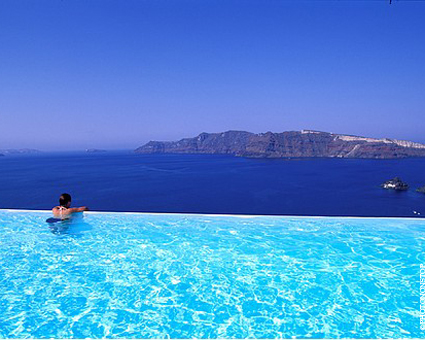
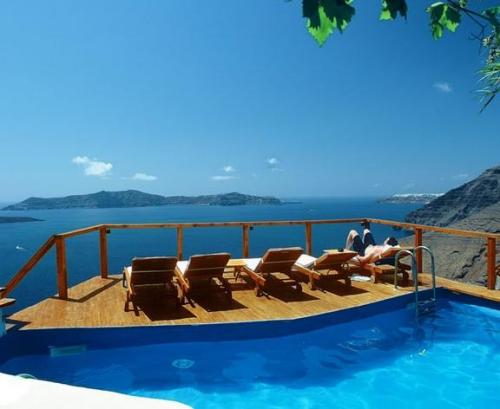
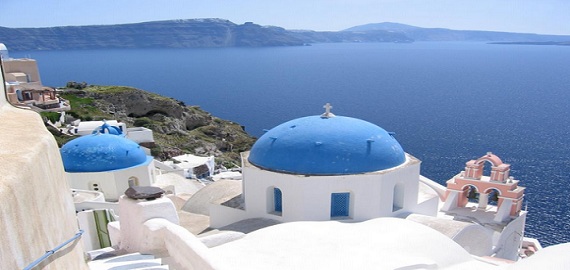
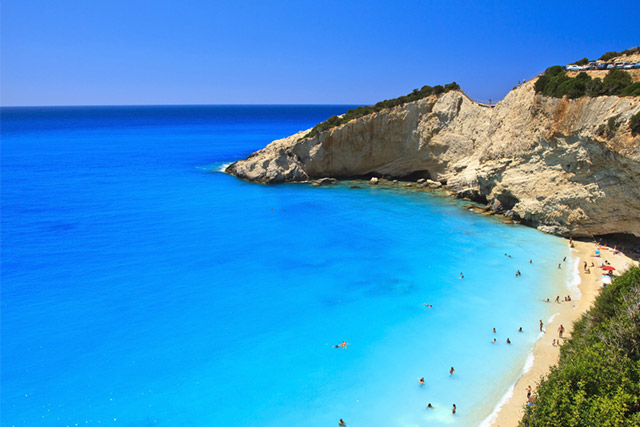

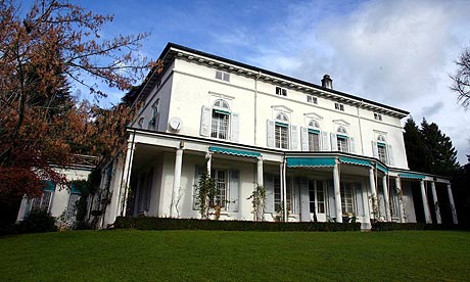
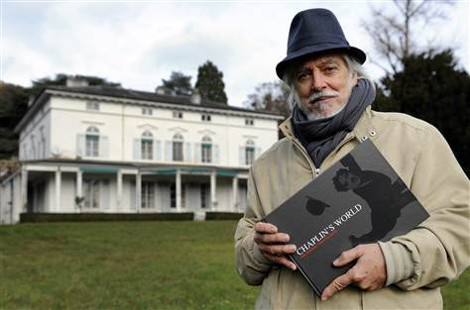




 Εδώ και μερικούς μόλις μήνες, δημιουργήθηκε το Thessaloniki Convention Bureau, ο νέος φορέας που βασικό στόχο έχει την προώθηση της Θεσσαλονίκης ως συνεδριακό προορισμό και την ανάδειξή της στον παγκόσμιο χάρτη για διεκδίκηση διεθνών συνεδρίων και διοργανώσεων, συμβάλλοντας ταυτόχρονα στην αναζωογόνηση της οικονομίας και της τοπικής αγοράς.
Εδώ και μερικούς μόλις μήνες, δημιουργήθηκε το Thessaloniki Convention Bureau, ο νέος φορέας που βασικό στόχο έχει την προώθηση της Θεσσαλονίκης ως συνεδριακό προορισμό και την ανάδειξή της στον παγκόσμιο χάρτη για διεκδίκηση διεθνών συνεδρίων και διοργανώσεων, συμβάλλοντας ταυτόχρονα στην αναζωογόνηση της οικονομίας και της τοπικής αγοράς. Η σύμπραξη του TERRENCE BLANCHARD και της ΚΡΑΤΙΚΗΣ ΟΡΧΗΣΤΡΑΣ ΘΕΣΣΑΛΟΝΙΚΗΣ με μαέστρο τον αρχιμουσικό ΣΤΕΦΑΝΟ ΤΣΙΑΛΗ.
Η σύμπραξη του TERRENCE BLANCHARD και της ΚΡΑΤΙΚΗΣ ΟΡΧΗΣΤΡΑΣ ΘΕΣΣΑΛΟΝΙΚΗΣ με μαέστρο τον αρχιμουσικό ΣΤΕΦΑΝΟ ΤΣΙΑΛΗ.